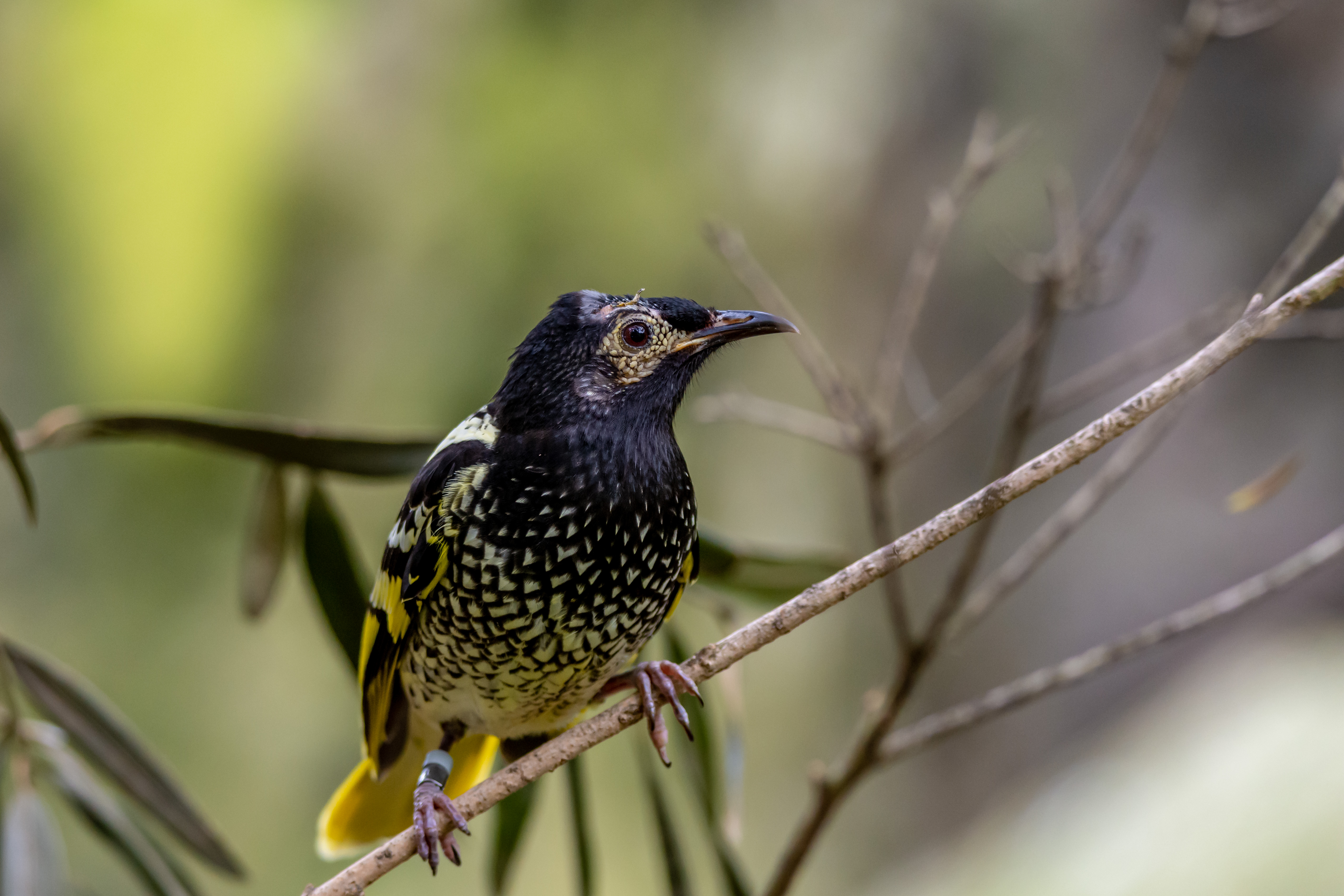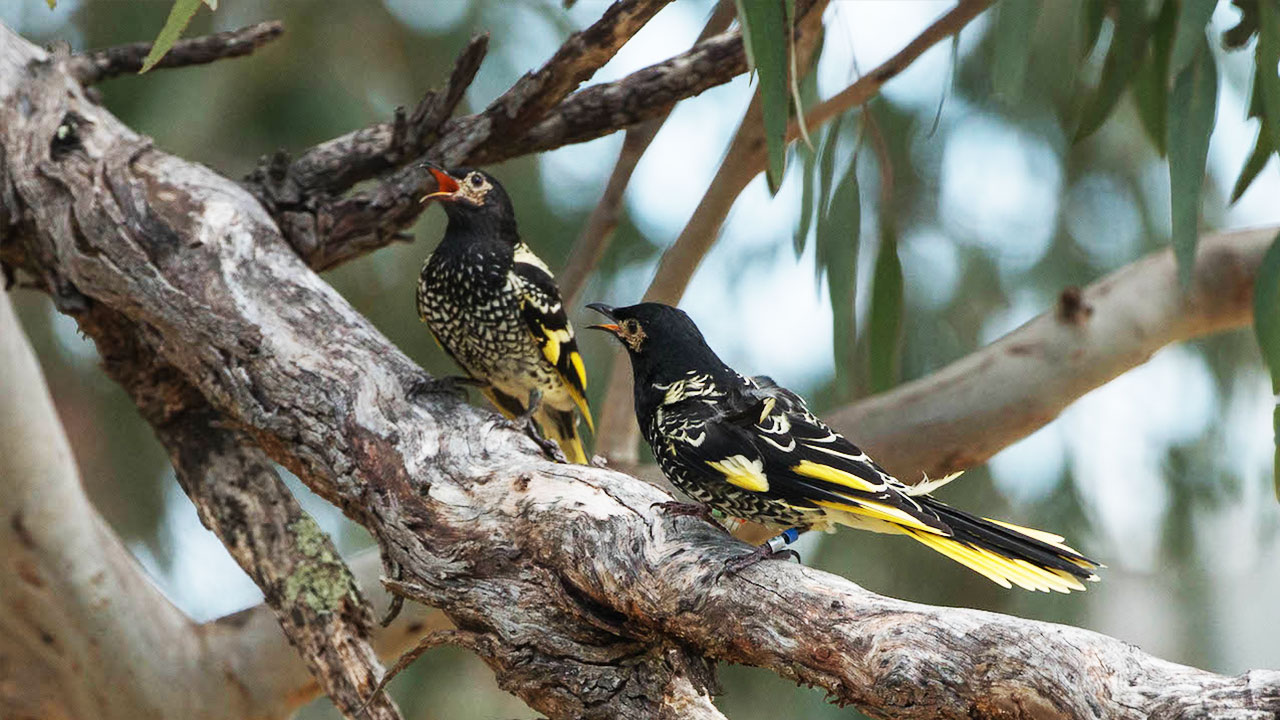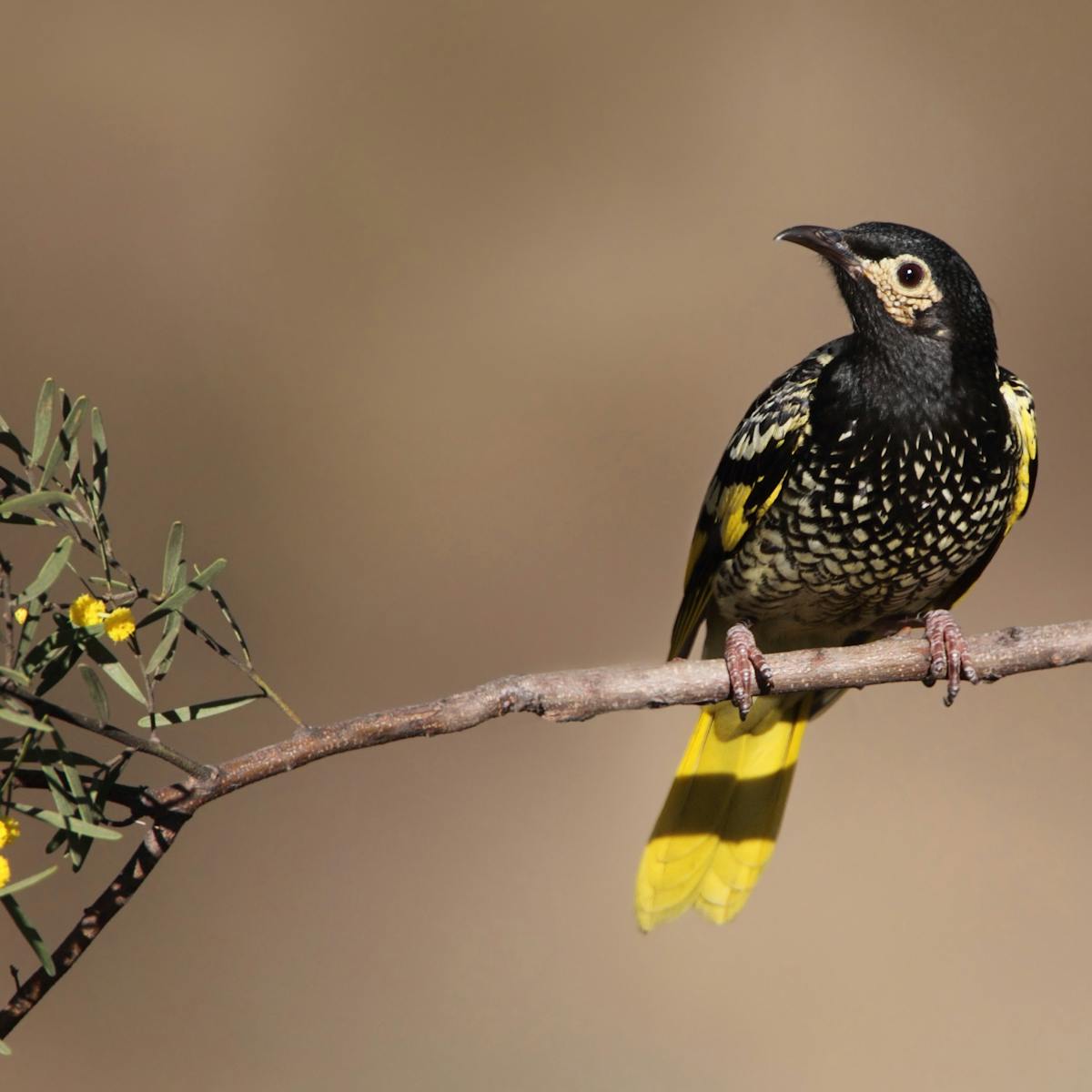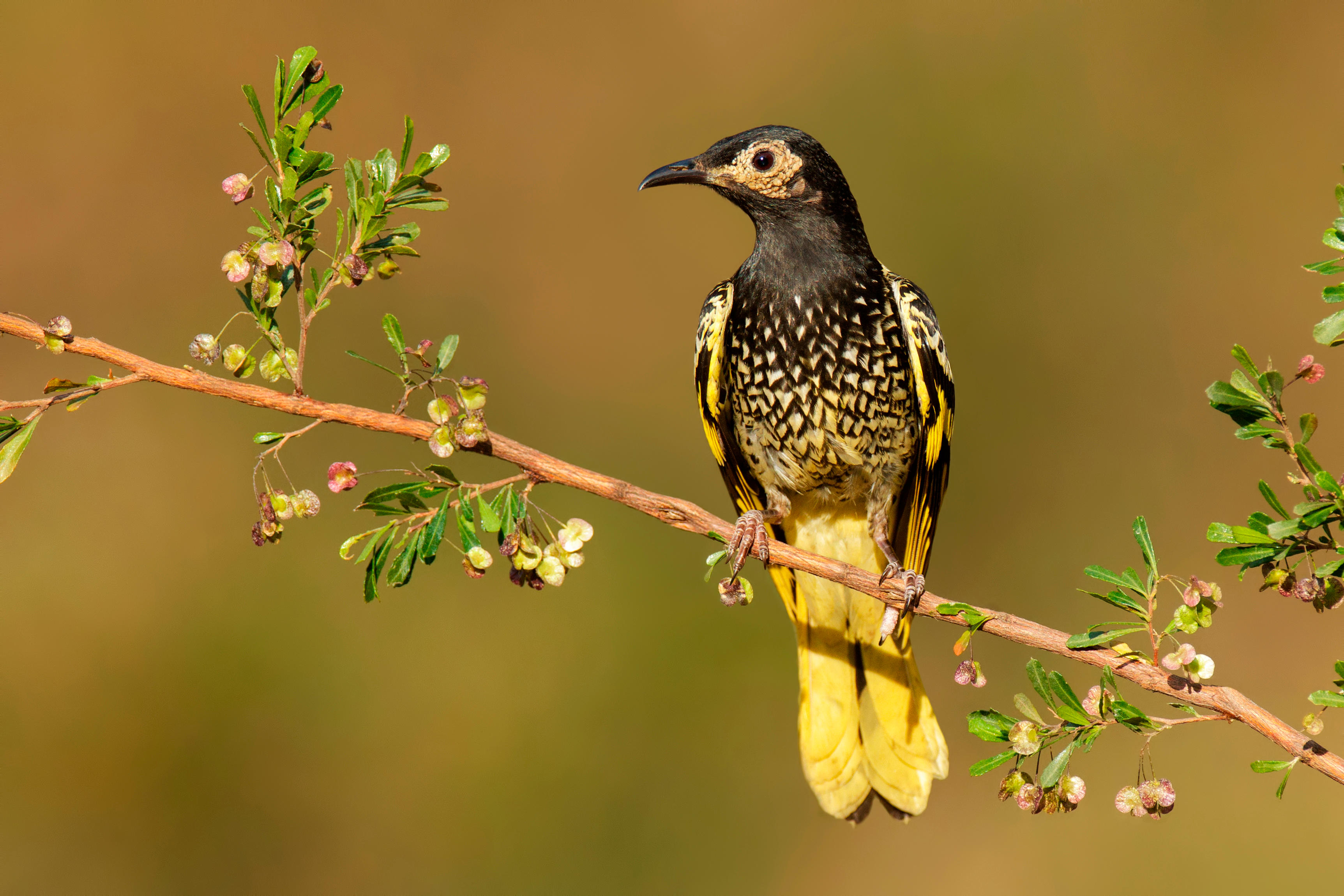

With its swift and graceful movements, the Regent Honeyeater expertly gathers nectar from a multitude of blossoming flowers. Its long, elegantly curved bill is perfectly adapted to this task, enabling it to extract sustenance with unparalleled efficiency.

Endemic to the woodlands and forests of southeastern Australia, the Regent Honeyeater finds solace among the eucalyptus trees that define its habitat. These trees provide not only shelter but also a vital source of nectar from their abundant blossoms. Tragically, human activities such as land clearing and habitat fragmentation, coupled with the decline of eucalyptus trees, have cast a shadow over this remarkable species.

A profound concern surrounding the Regent Honeyeater is its critically low numbers. Shockingly, experts estimate that fewer than 400 individuals remain in the wild, leaving it on the precipice of critical endangerment. This dire decline can be primarily attributed to the loss of suitable habitat, which hinders the species’ ability to find adequate food and appropriate breeding sites.

Conservation organizations and governmental bodies have acknowledged the urgency of the situation and have undertaken diverse initiatives to secure the future of the Regent Honeyeater. These endeavors encompass habitat restoration programs, captive breeding and release projects, and widespread public awareness campaigns that strive to enlighten communities about the significance of safeguarding this iconic avian species.

Central to the preservation of the Regent Honeyeater is the critical role of habitat restoration. Ambitious efforts are underway to rehabilitate degraded landscapes and establish interconnected corridors between fragmented habitats, enabling the birds to navigate freely and locate suitable nesting grounds. The planting of native vegetation, especially eucalyptus trees and other nectar-rich blooms, is pivotal in providing the essential resources vital for the species’ survival.

Captive breeding initiatives have also played a pivotal role in bolstering the Regent Honeyeater population. By breeding these birds in captivity and subsequently releasing them into their natural habitat, the likelihood of successful reproduction and genetic diversity increases. With vigilant monitoring and ongoing support, conservationists aim to establish self-sustaining populations that can thrive independently.
The pulse of Regent Honeyeater conservation lies in public awareness and community engagement. By educating the public about the species’ plight and the importance of preserving its habitat, support and involvement in conservation endeavors are generated. Community engagement initiatives, including citizen science projects and volunteer opportunities, empower individuals to directly contribute to the safeguarding of this magnificent species.


